- The initiative brings together lake and phosphorus management communities, marking a significant step toward establishing a global framework for sustainable phosphorus management.
- The $2 million initiative will increase clarity on global phosphorus emissions, drivers and impacts through science, data and evidence.
- Excess nutrient loading into lakes endangers human health, drinking water supplies, and drives biodiversity loss.
A new initiative seeking to address phosphorus pollution in lakes and freshwater ecosystems was launched, with support from the government of Chile and the UN Environment Programme (UNEP).
Global phosphorus pollution reduction efforts continue to face setbacks including a lack of policy and public awareness, fragmentation of actions and policies, and the absence of intergovernmental coordination.
Currently, the state of nutrient pollution and the resulting effect on biodiversity in both fresh and marine ecosystems, as well as on socio-economic and ecological systems necessitates an urgent need for a coherent global approach, especially for countries where phosphorus emissions are increasing rapidly.
The UNEP-led ‘Towards Sustainable Phosphorus Cycles in Lake Catchments’ – or uP-Cycle, funded by the Global Environment Facility (GEF) will address this policy gap by bringing together sustainable lake and phosphorus management communities to improve the protection and restoration of marine and freshwater ecosystems by developing and testing a sustainable phosphorus management framework in Chile that will inform international application.
“Nutrient pollution, especially from phosphorus in freshwater, is a visible consequence of human impact on the environment,” said Leticia Carvalho, Principal Coordinator of the Marine and Freshwater Branch of UNEP. “It is essential that stakeholders recognize and address this issue to safeguard our marine and freshwater ecosystems for future generations.”
Wastewater discharges alone account for some 3 million tonnes of phosphorus that leak into the environment every year, globally. Studies reveal that proper treatment could reduce the concentration of phosphorus and nitrogen in wastewater by at least 80 per cent.
Other major sources of pollution due to excess phosphorus from agricultural activities, food production losses also flow into waterbodies polluting lakes, rivers and the ocean in a process known as eutrophication – estimated to cost the US economy alone US$2.2 billion annually.
This flow leads to algal blooms which contaminate supplies of drinking water and create oxygen-starved dead zones, which can kill fish and other aquatic species. Phosphorus pollution remains a prime driver of biodiversity loss and contributes to the degradation of ecosystems on which humanity depends.
In Chile, the initiative’s pilot targets 280,500 hectares of the Lake Villarrica basin. This area is crucial due to the effect of rising phosphorus emissions to the Chilean Lake District and nearby regions including the larger Humboldt Current that supports some of the world’s densest populations of fish.
According to experts, the phosphorus load is 1.54 times greater than the lake’s critical load – defined as the maximum load that the lake can receive to maintain its trophic status, beyond which ecosystem damage is inevitable.
The uP-Cycle initiative will therefore work with the national stakeholders to improve understanding and explore opportunities for enhancing phosphorus emission reduction programmes and policies, targeting protection of lake basins and the Humboldt Current Large Marine Ecosystem.
The resulting engagements’ knowledge, learnings, conceptual model will be necessary for the establishment of a framework by an international community of practice drawn from global phosphorus partnerships centred on a Net Zero Phosphorus approach.
This approach aims to balance human-caused phosphorus emissions and removals, guiding policymakers and practitioners toward reducing emissions while promoting sustainable economic growth.
It has two steps: first, stopping current emissions to prevent more damage, then reducing future emissions for ecosystem recovery (Towards Net Zero P). Second, accelerating programs that offer multiple benefits across the value chain for long-term sustainability (Beyond Net Zero P or Net Zero P-Plus).
NOTES TO EDITORS
About the Global Environment Facility
The Global Environment Facility (GEF) is a multilateral fund dedicated to confronting biodiversity loss, climate change, pollution, and strains on land and ocean health. Its grants, blended financing, and policy support helps developing countries address their biggest environmental priorities and adhere to international environmental conventions. Over the past three decades, the GEF has provided more than US$24 billion in financing and mobilized another US$138 billion for more than 5,700 national and regional projects.
About the UN Environment Programme
UNEP is the leading global voice on the environment. It provides leadership and encourages partnership in caring for the environment by inspiring, informing and enabling nations and peoples to improve their quality of life without compromising that of future generations.




